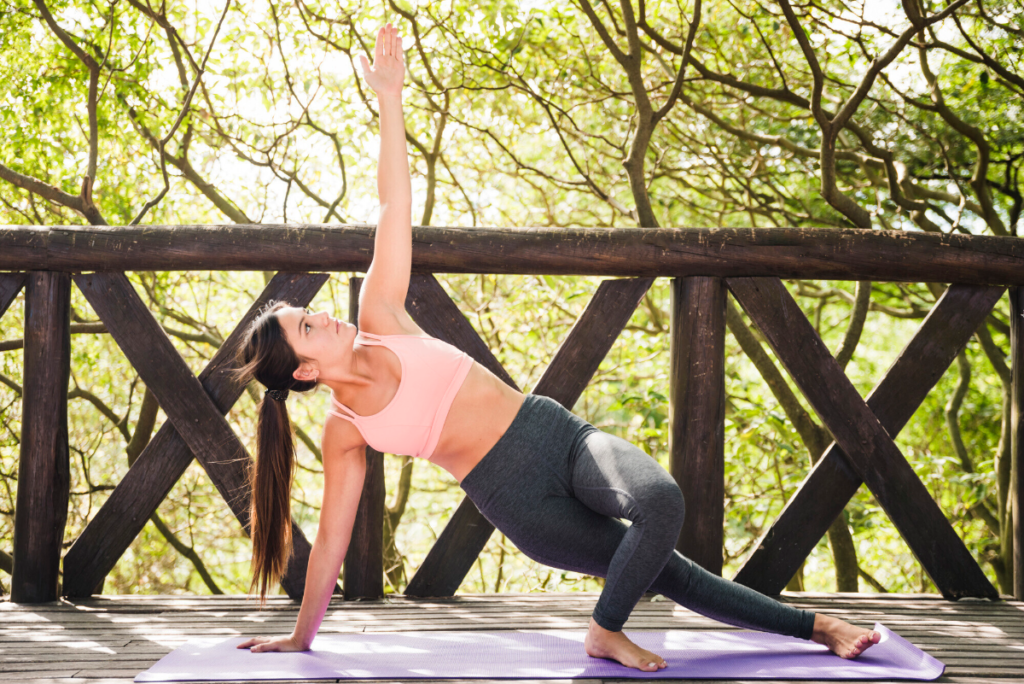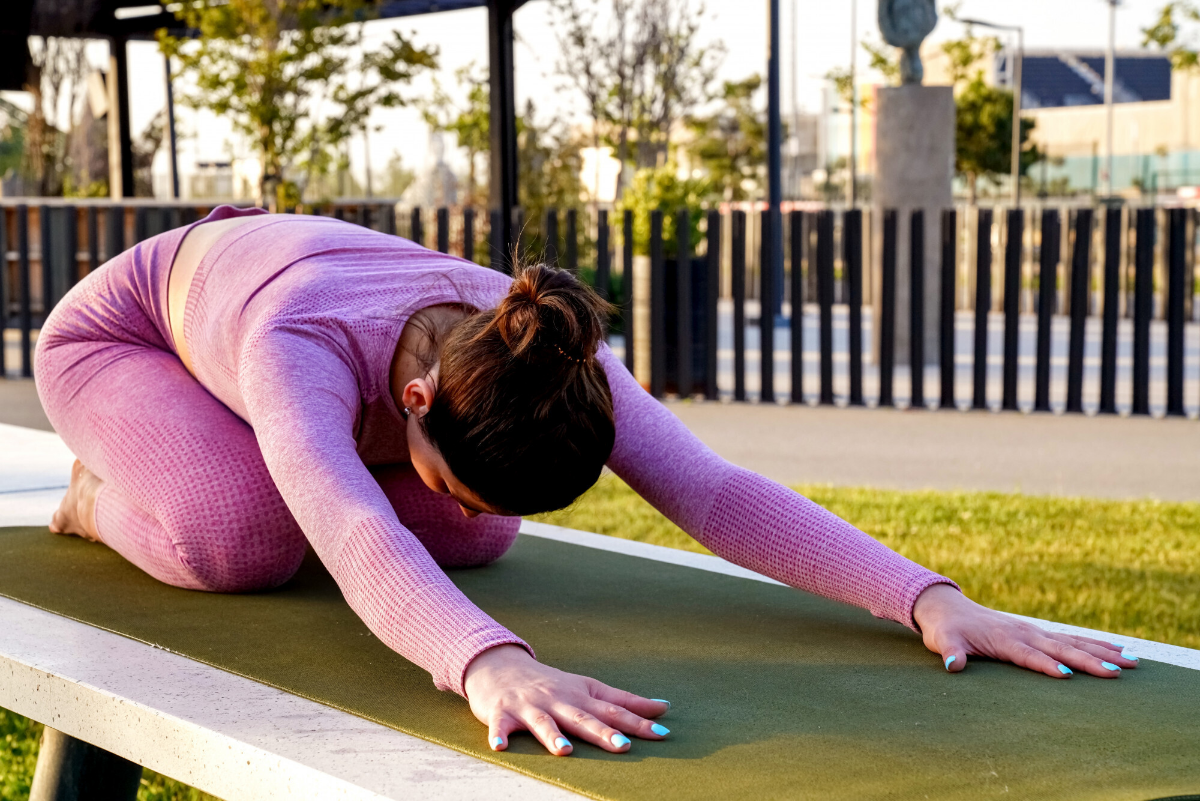Introduction
Lets explore yoga for mental health today as the prevalence of mental health problems is rising in the fast-paced society of today. Millions of individuals worldwide suffer from mental health conditions such as anxiety, depression, stress, and others. While there are various treatments available, yoga has emerged as a powerful and holistic approach to improving mental health. Combining physical postures, breath control, and meditation, yoga offers a unique way to enhance mental well-being. This comprehensive guide will explore how yoga benefits mental health, specific yoga poses and techniques for mental health, and how to incorporate yoga into your daily routine for optimal results.
Table of Contents
The Connection Between Yoga and Mental Health
Yoga is a very old discipline that dates back more than 5,000 years to India. It includes physical asanas (postures), pranayama (breath control), meditation, and moral precepts. The practice of yoga helps harmonize the body and mind, promoting overall health and well-being. Here are some ways yoga benefits mental health:
1. Reduces Stress
Yoga reduces stress by promoting relaxation and reducing the body’s stress response. The combination of physical movement, controlled breathing, and meditation helps lower cortisol levels, the body’s primary stress hormone.
2. Alleviates Anxiety
Practicing yoga can help alleviate anxiety by encouraging mindfulness and present-moment awareness. Yoga’s focus on breath control and meditation helps calm the nervous system, reducing feelings of anxiety and panic.
3. Improves Mood
Yoga has been demonstrated to elevate mood and lessen depressive symptoms. Physical activity releases endorphins, the body’s natural mood elevators, while meditation and breath control help balance neurotransmitter levels.
4. Enhances Cognitive Function
Regular yoga practice can enhance cognitive function, including memory, attention, and concentration. Yoga’s emphasis on mindfulness and mental focus helps improve brain function and mental clarity.
5. Promotes Emotional Stability
Yoga promotes emotional stability by teaching practitioners to manage their emotions and reactions. The practice of mindfulness and self-awareness helps individuals understand and regulate their emotions better.
Yoga Poses for Mental Health
Certain yoga poses are particularly effective for improving mental health. These poses focus on relaxation, stress reduction, and emotional balance.

1. Child’s Pose (Balasana)
Benefits: Calms the mind, reduces stress, and promotes relaxation.
How to Practice:
- Place your hands on the floor, knees apart, and your big toes touching.
- With your forehead resting on the mat, take a seat back on your heels and extend your arms forward.
- Take a deep breath and hold it for a few moments.
2. Cat-Cow Pose (Marjaryasana-Bitilasana)
Benefits: Reduces tension in the spine, improves flexibility, and promotes deep breathing.
How to Practice:
- With your wrists just beneath your shoulders and your knees beneath your hips, begin on your hands and knees.
- Take a breath, raise your head and tailbone, and arch your back (Cow Pose).
- Release your breath, arch your back, and bring your chin up to your chest (Cat Pose).
- Continue flowing between these poses for several breaths.
3. Standing Forward Bend (Uttanasana)
Benefits: Calms the mind, relieves tension in the neck and shoulders, and promotes relaxation.
How to Practice:
- Stand with your feet hip-width apart.
- Fold forward, letting your head and arms dangle from your hips.
- Hold your elbows and sway gently if comfortable.
- Take a deep breath and hold it for a few moments.
4. Legs-Up-the-Wall Pose (Viparita Karani)
Benefits: Promotes relaxation, reduces tension in the legs and lower back, and improves circulation.
How to Practice:
- Lay on your back and take a seat near to a wall.
- Swing your legs up the wall and scoot your hips as close to the wall as comfortable.
- Shut your eyes and place your arms at your sides.
- Breathe deeply and hold for several minutes.
5. Corpse Pose (Savasana)
Benefits: Provides deep relaxation, calms the mind, and reduces overall stress.
How to Practice:
- With your arms by your sides and your legs outstretched, palms facing up, assume a flat back position.
- Close your eyes and focus on your breath.
- Give your body permission to fully unwind and let go of any stress.
- Hold this position for five to ten minutes at minimum.
Breath Control Techniques for Mental Health
Breath control, or pranayama, is a fundamental aspect of yoga that significantly impacts mental health. Here are some effective pranayama techniques for mental health:
1. Deep Belly Breathing (Diaphragmatic Breathing)
Benefits: Reduces tension and promotes relaxation by activating the parasympathetic nervous system.
How to Practice:
- Sit or lie down comfortably.
- Grasp your tummy with one hand and your chest with the other.
- Take a deep breath through your nostrils and raise your abdomen.
- Breathe out gently through your lips, allowing your stomach to drop.
- Repeat for several minutes, focusing on deep, even breaths.
2. Alternate Nostril Breathing (Nadi Shodhana)
Benefits: Balances the nervous system, calms the mind, and reduces anxiety.
How to Practice:
- Sit comfortably with your spine straight.
- Using your right thumb, close your right nostril.
- Inhale deeply through your left nostril.
- Inhale through your right nostril, close it with your thumb, and exhale through your left nostril.
- Close your left nostril with your right ring finger, and exhale through your right nose.
- Continue this pattern for several minutes.
3. Ocean Breath (Ujjayi Breath)
Benefits: Calms the mind, promotes relaxation, and reduces stress.
How to Practice:
- Sit or lie down comfortably.
- Inhale deeply through your nose.
- Exhale through your nose, constricting the back of your throat to create a gentle ocean sound.
- Focus on the sound of your breath and continue for several minutes.
Meditation Techniques for Mental Health
Meditation is an integral part of yoga that helps calm the mind and improve mental health. Here are some effective meditation techniques:

1. Mindfulness Meditation
Benefits: Increases present-moment awareness, reduces stress, and improves emotional regulation.
How to Practice:
- Sit comfortably with your spine straight.
- Close your eyes and focus on your breath.
- Notice the sensation of your breath entering and leaving your nostrils.
- If your thoughts stray, softly return them to your breathing.
- Practice for 10-15 minutes daily.
2. Loving-Kindness Meditation (Metta Meditation)
Benefits: Increases positive emotions, reduces stress, and promotes emotional well-being.
How to Practice:
- Sit comfortably with your spine straight.
- Shut your eyes and inhale deeply many times.
- Silently repeat phrases of loving-kindness, such as “May I be happy, may I be healthy, may I be safe, may I live with ease.”
- Share these good vibes with everyone you know, including your family, friends, and even people you disagree with.
- Practice for 10-15 minutes daily.
3. Body Scan Meditation
Benefits: Promotes relaxation, reduces stress, and increases body awareness.
How to Practice:
- Lie down comfortably on your back.
- Shut your eyes and inhale deeply many times.
- Begin to mentally scan your body from your toes to your head, noticing any areas of tension or discomfort.
- Breathe into each area, allowing it to relax and release tension.
- Continue the scan for 10-15 minutes.
Incorporating Yoga into Your Daily Routine
Integrating yoga into your daily life can provide lasting mental health benefits. Here are some pointers to get you going:
1. Start with Short Sessions
If you’re new to yoga, start with short sessions of 10-15 minutes and gradually increase the duration as you become more comfortable.
2. Practice Consistently
Sustaining the health advantages of yoga requires consistency. Aim to practice yoga at the same time each day to establish a routine.
3. Create a Comfortable Space
Create a special area where you may practice yoga. Ensure it’s quiet, comfortable, and free from distractions.
4. Combine Yoga with Other Relaxation Techniques
Incorporate other relaxation techniques, such as meditation, deep breathing, and mindfulness, into your yoga practice to enhance mental health benefits.
5. Listen to Your Body
Observe your body’s cues and refrain from overexerting yourself. Yoga should be a gentle and enjoyable practice.
Conclusion
Yoga is a powerful tool for improving mental health, offering numerous physical, mental, and emotional benefits. By incorporating yoga poses, breath control techniques, and meditation into your daily routine, you can effectively manage stress, anxiety, and other mental health issues. Whether you’re a beginner or an experienced practitioner, yoga provides a holistic approach to achieving a balanced and harmonious life.
FAQ
Can yoga really help with mental health issues?
Yes, yoga is highly effective in improving mental health by promoting relaxation, reducing stress and anxiety, improving mood, enhancing cognitive function, and promoting emotional stability.
How often should I practice yoga for mental health benefits?
Consistency is key. Aim to practice yoga daily, even if only for a few minutes, to experience the full benefits for mental health.
What are the best yoga poses for mental health?
Some of the best yoga poses for mental health include Child’s Pose, Cat-Cow Pose, Standing Forward

